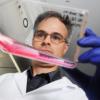OK. Certainly oxidative damage is a more-or-less universal mechanism
of aging, and has been for a very long time. Thus, the fundamentals
of how species protect themselves against it were evolved a very long
time ago and have been retained. What I was stressing was that the
less fundamental aspects are less conserved, partly because they've
been freer to vary during evolution, but mainly because their optimal
nature is more dependent on the details of the organism's physiology
than is the case for the fundamental things. Now, clearly the obvious
approach to mammalian life extension is to figure out the fundamentals
(using any old species, since they are conserved) and then apply our
knowledge. Unfortunately, we've been trying that ever since Harman
started feeding antioxidants to mice in the 1950s, and it's been a
complete flop. So, we have to get into the detailed mechanisms -- and
for those, we have to work with species closer to us.
(my emphasis in bold)
That's a bit a lame. We have hardly exhausted our avenues in dealing with oxidative damage.
Oral administration of antioxidants in a non-deficient diet has always shown minimal effects. Induced overexpression of SOD and other oxidant quenchers have consistently resulted in lifespan increase and robustness in oxidatively adverse environments and researchers have yet to explore the possibility of additive effects using multiple antioxidant mechanisms. Unsurprisingly, the great number of pathological phenotypes that manifest as a result of increased oxidative activities would have an instant cure should interventions be discovered that can deliver a sustained rate of oxidant quenching function. Even so, we cannot afford to entirely suppress oxidants in the cell as they provide vital signaling functions so we can only expect so much from such an approach.
The overexpression of repair mechanism associated genes, however, has been spectacularly neglected, due perhaps to the flawed assumptions from limited studies where it was shown that some DNA repair enzymes will increase mutagenesis if overexpressed. Highly substrate-specific DNA repair mechanism overexpression has not been seriously studied. In the 2001 Science special genome issue, over 100 human DNA repair genes were reported. Less than 5 have been studied in overexpression scenarios.
The constantly active mechanism of nuclear and mitochondrial DNA repair operates at a rate designed to compensate with up to 500,000 DNA lesions per cell per day. A decrease in the rate of repair can result in apoptosis or cancer at worst and in senescence at best. Aged cells show an increase in oxidative damage and a decrease in DNA repair function.
To further underline just how much of a research vacuum this area is in, I have yet to see any deliberations in the literature on the consequence of an overly efficient rate of DNA repair. Considering the need for mutations to occur so that genomic plasticity and evolvability can be maintained, an overactive DNA repair system would effectively slow the rate of evolution and that could have catastrophic consequences where rapid adaptability is a survival requirement. Such an observation begs the question: how much has evolution played a role in regulating the rate of DNA repair to enable the necessary equilibrium between the force of endogenous and exogenous damage and the need to maintain genomic plasticity?
We are compelled to consider: is cellular vulnerability a necessary compromise in order to maintain a certain rate of evolution? Linking aging and disease as a consequence of the very mechanism of evolution would present a new level of biological systems unification.
Many important questions remain unanswered and much uncharted territory awaits discovery amongst these ancient and conserved mechanisms that we share with most forms of life. That we have at our disposal a model organism such as drosophila with which to explore them should be considered a boon rather than a topic of controversy.
The little fly may become man's best ally yet.












































